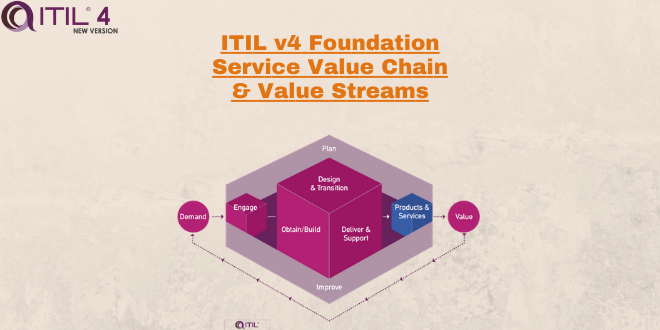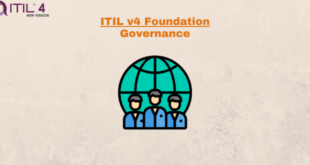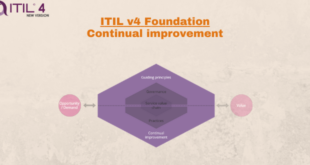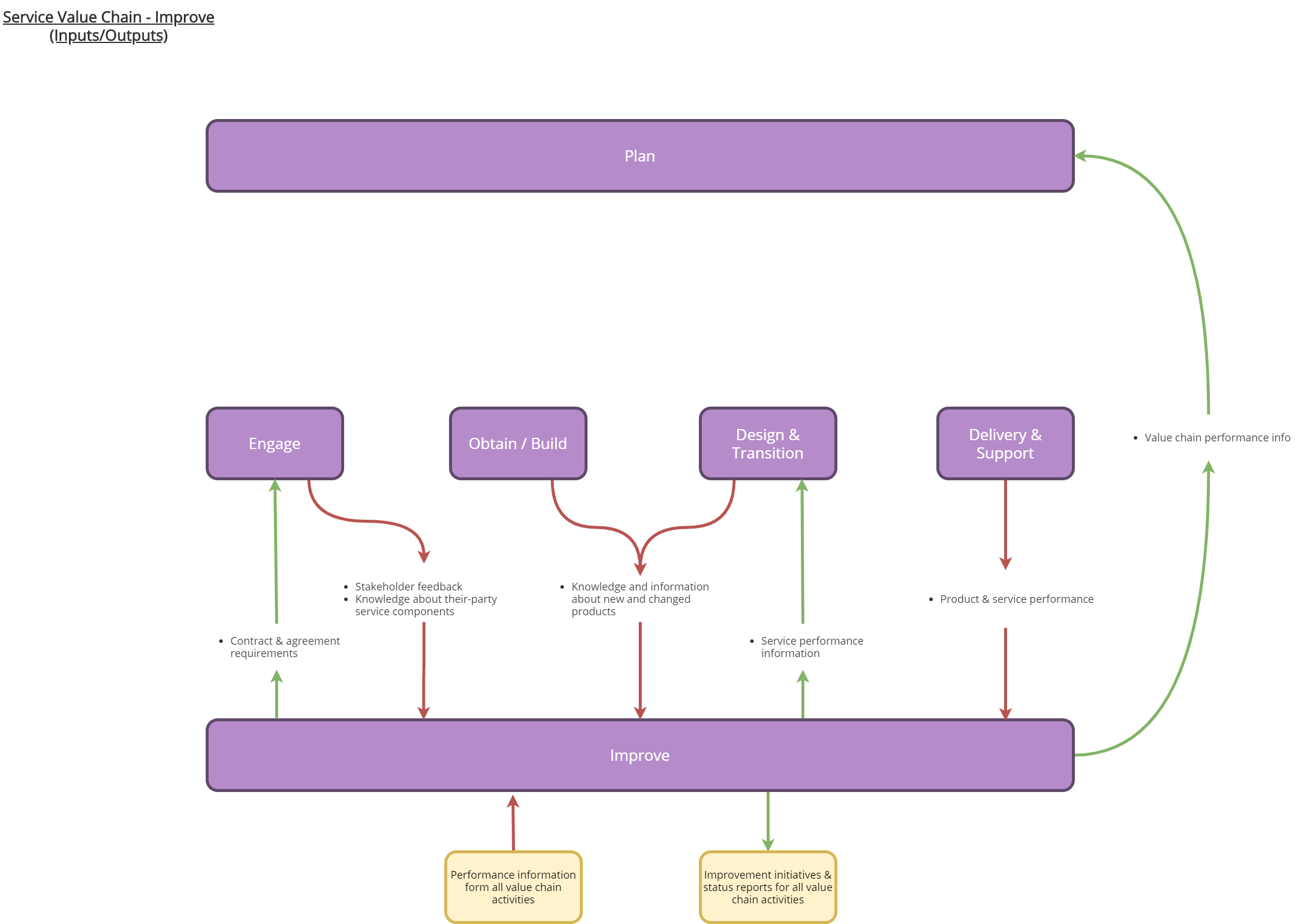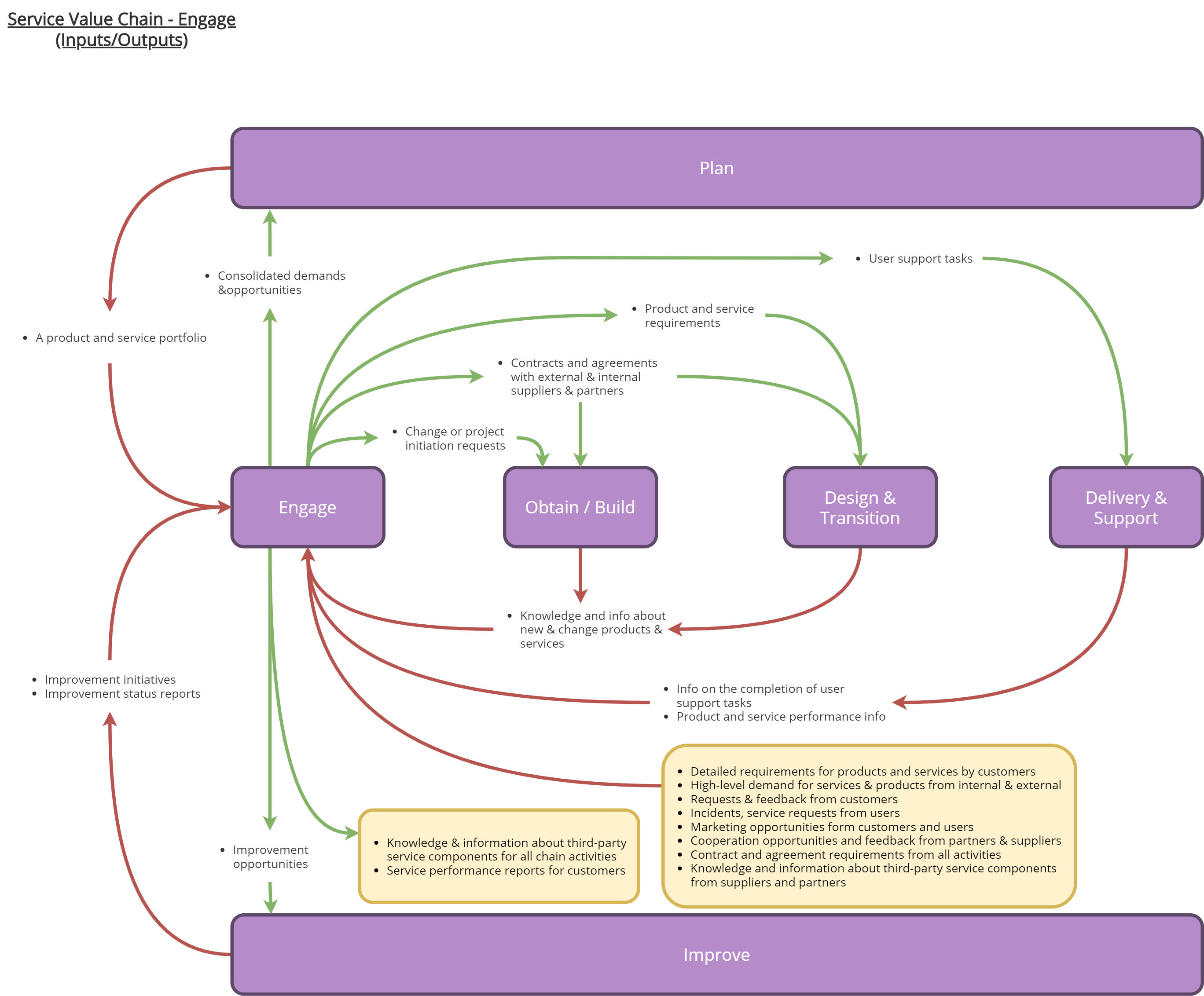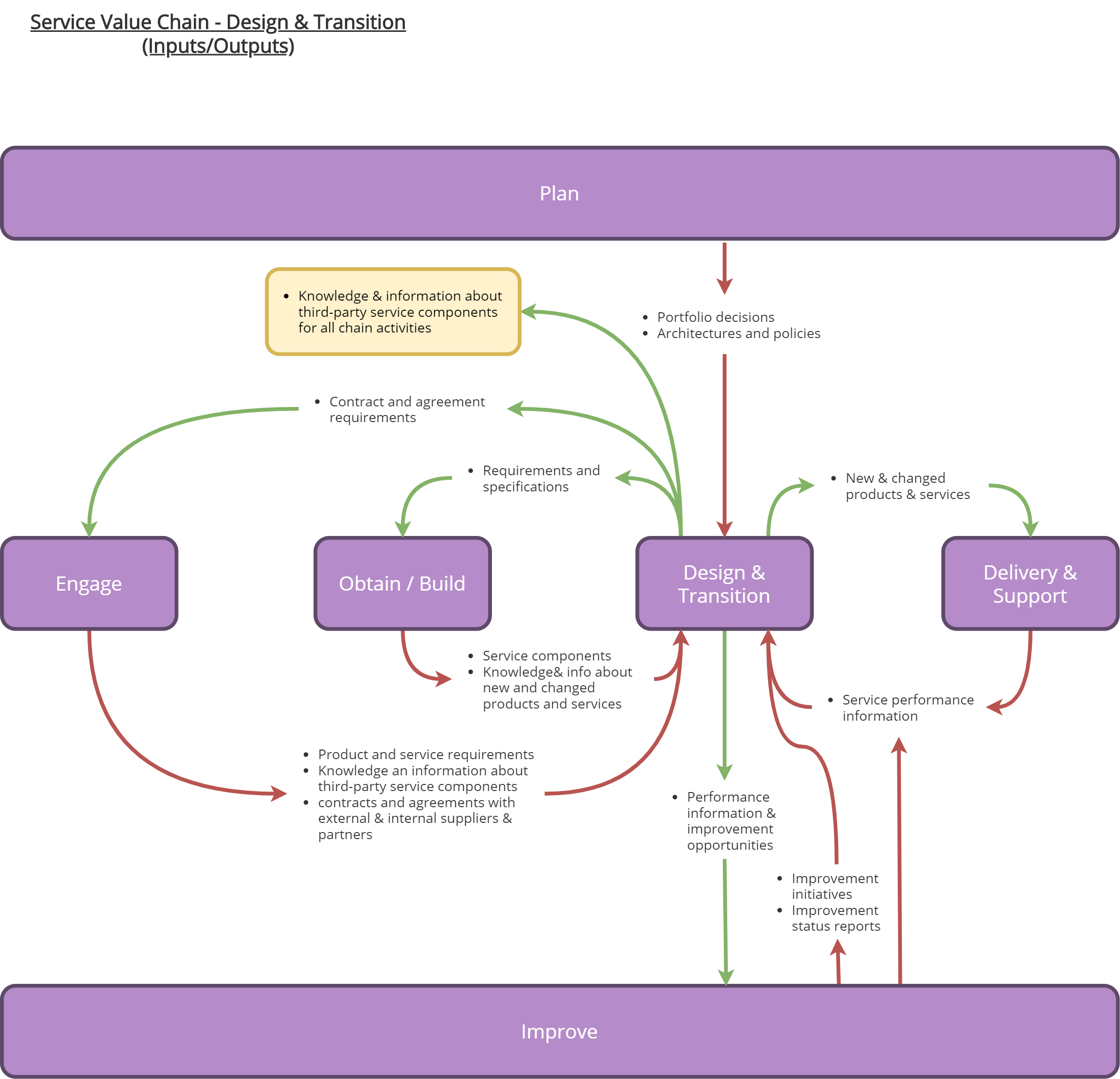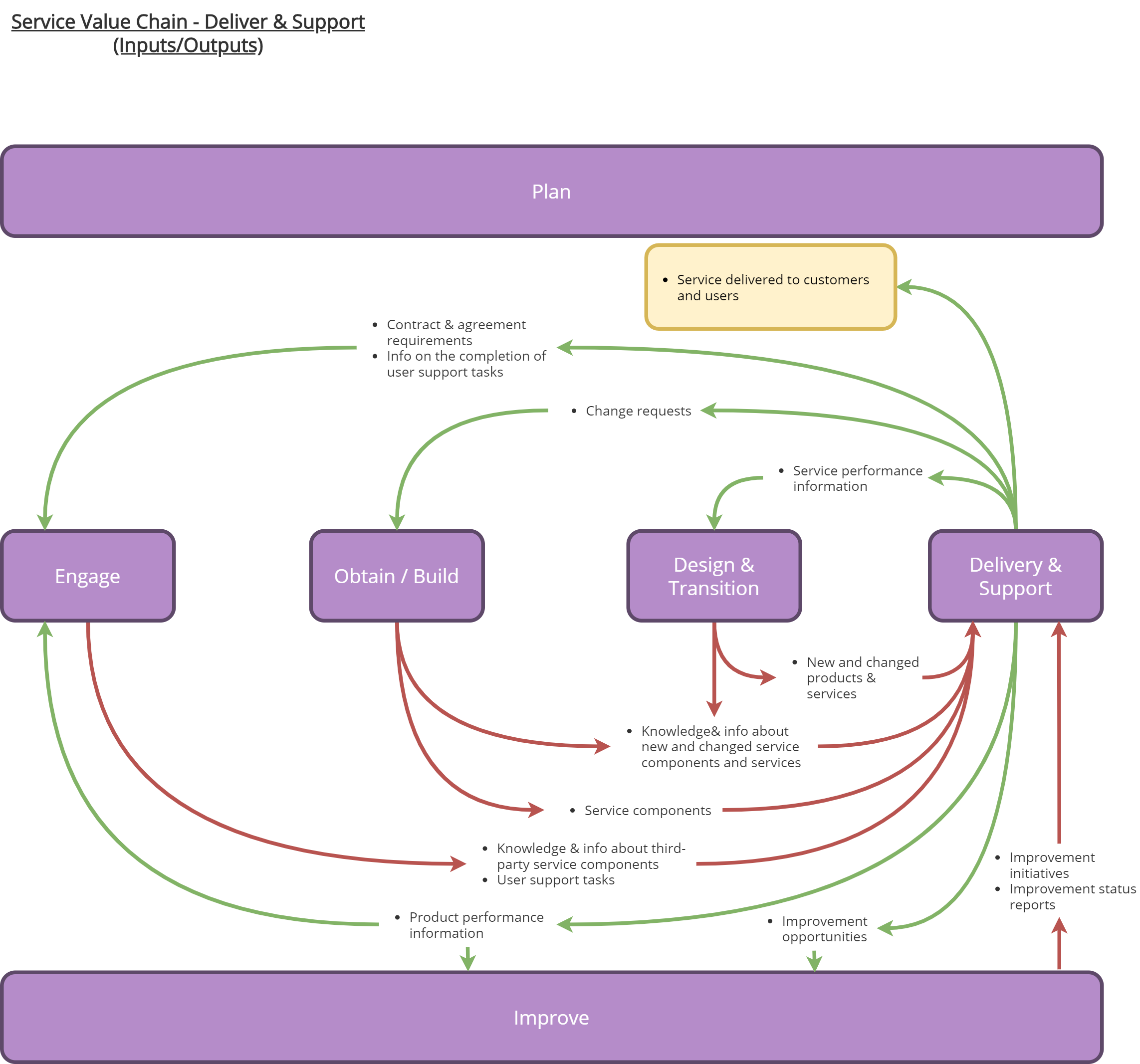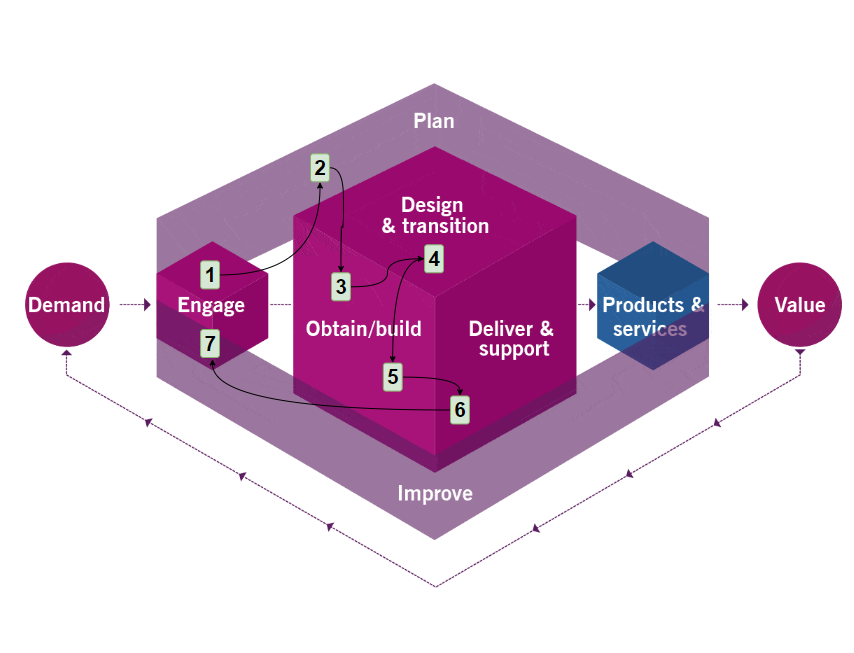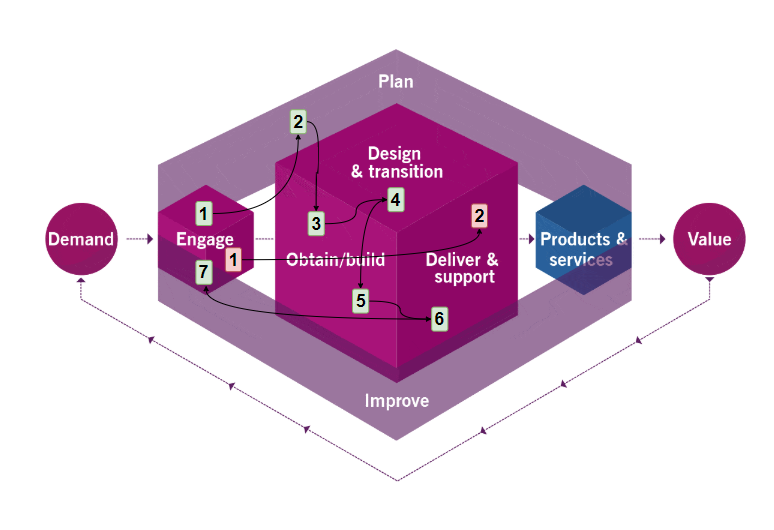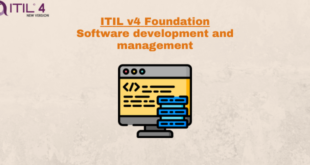Contents
New to ITIL v4 is the Service Value Chain (SVC), which is at the center of the Service Value System (SVS). It outlines 6 key activities used to respond to demand and facilitate value realization through the creation of products and services. Simply put, it is a bunch of processes which lead to the creation of products & services which in turn lead to value.
(Think of it like a box made up of processes where you input your demand and output value)
Value chain activities
There are 6 value chain activities which most people would be familiar with even if they have never used ITIL before. Each represents the steps your will take to create value and will have an input and output. There is no particular order each should be used or considered, it will always depend on how you create the shortest path in the creation of value.
- Plan
- Improve
- Engage
- Design & Transition
- Obtain / Build
- Delivery & Support
Plan
The purpose of the plan value chain activity is to ensure a shared understanding of the vision, current status, and improvement direction for all four dimensions and all products and services across the organization.
Improve
The purpose of the improve value chain activity is to ensure continual improvement of products, services, and practices across all value chain activities and the four dimensions of service management.
Engage
The purpose of the engage value chain activity is to provide a good understanding of stakeholder needs, transparency, and continual engagement and good relationships with all stakeholders.
Design & Transition
The purpose of the design and transition value chain activity is to ensure that products and services continually meet stakeholder expectations for quality, costs, and time to market.
Obtain / Build
The purpose of the obtain/build value chain activity is to ensure that service components are available when and where they are needed, and meet agreed specifications.
Deliver & Support
The purpose of the deliver and support value chain activity is to ensure that services are delivered and supported according to agreed specifications and stakeholders’ expectations.
Service value chain in action
[Real estate example] There was a demand direct from our customers to create a platform which could give estimated property values without the need for an appraiser. We saw that there would be co-created value through better customer experience (CX) and new customer acquisition to provide this as a free service. As it so happens, we already had an internal tool which was built for our team, but never made accessible to the public. We decide to hook into this same system to utilize an already existing product in a different way.
Creating new SVC and service values stream.
(1) : Engage : Speaking with customers and getting feedback on what functionality they would like. Consolidating that feedback.
(2) : Plan : Creation of new service is discussed and makes sense as there is already an existing internal tool that has most of the functionally.
(3) : Obtain/Build : IT service management team provision a new web server for test/deploy of the new fronted application.
(4) : Design & transition : UX design and is done by the development team and work is assigned.
(5) : Obtain/Build : Developers build in some additional functionally to the existing application and make it available for a closed beta test.
(6) : Deliver & support : New tool is ready to use and has been validated as working by the development team.
(7) : Engage : Internal customer service team informed that they can start providing customers with the new tool. Customers can also organically navigate to the tool on our website.
Adding value streams to a value chain
As you can see with the above, this is a super basic example with a single value stream in our value chain. The demand from a customer has been turned into value. But what if we wanted to extend this and add in another value stream for customer service to reach out to customers informing them of the new service that is available.
(1) : Engage : Speaking with existing customers and informing them of this new tool.
(2) : Deliver : Send the customer an email to access the new free tool
Without adding too much more complexity, we can see already see a value chain with two value streams adding value to a customers experience. In practice, there would be many more value streams going through the same value chain.
- Continuous improvement could be done by engaging with customers and pushing suggested changes into the Design & Transition, Obtain/Build & Deliver & support
- A premium service could be added for customers which require more information (if there is a demand or potential opportunity) – There might be more complexities such as Design & Transition to create a payment system with an enhanced user experience, Plan to see if the project seems viable from a basic maintenance standpoint and then building, delivering and supporting the new service.
The best way to think about the service value chain and streams is just processes which are creating value – Concepts such as value stream optimization can be used to find areas which could be improved to unlock new value, or enhancing an existing stream to make it more efficient.
 MooMetric.com Integrating marketing and business metrics using code and non code solutions.
MooMetric.com Integrating marketing and business metrics using code and non code solutions.
